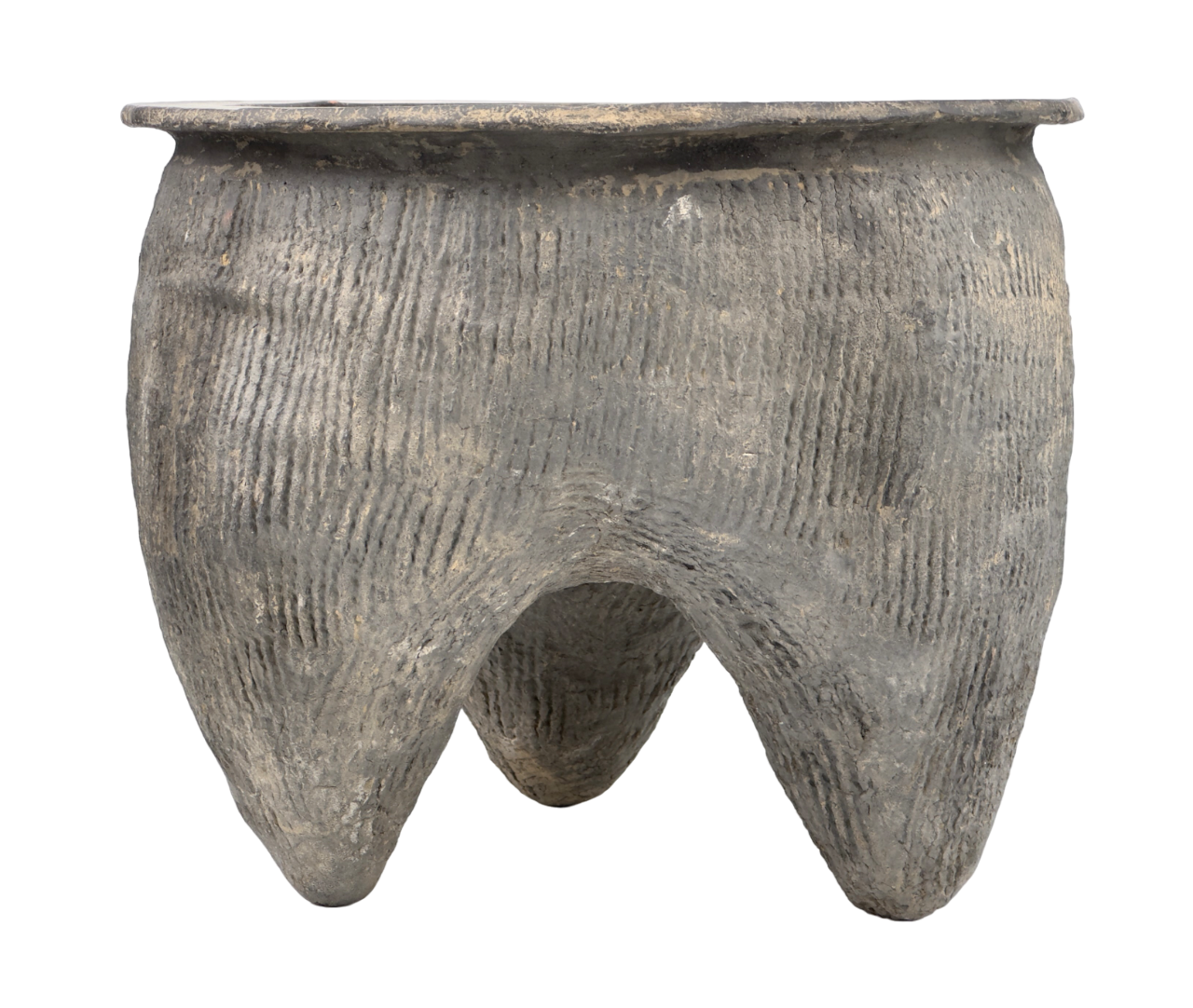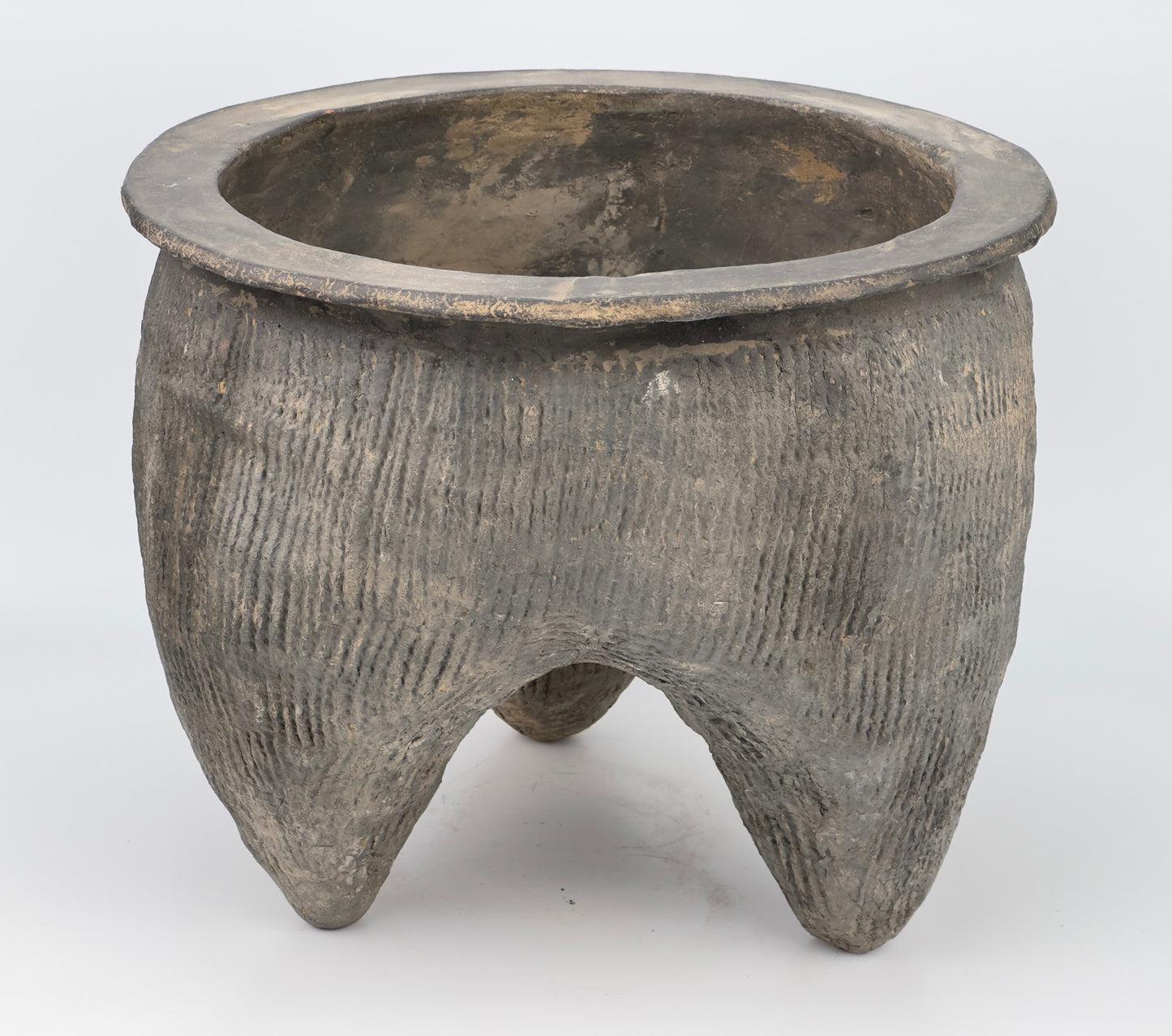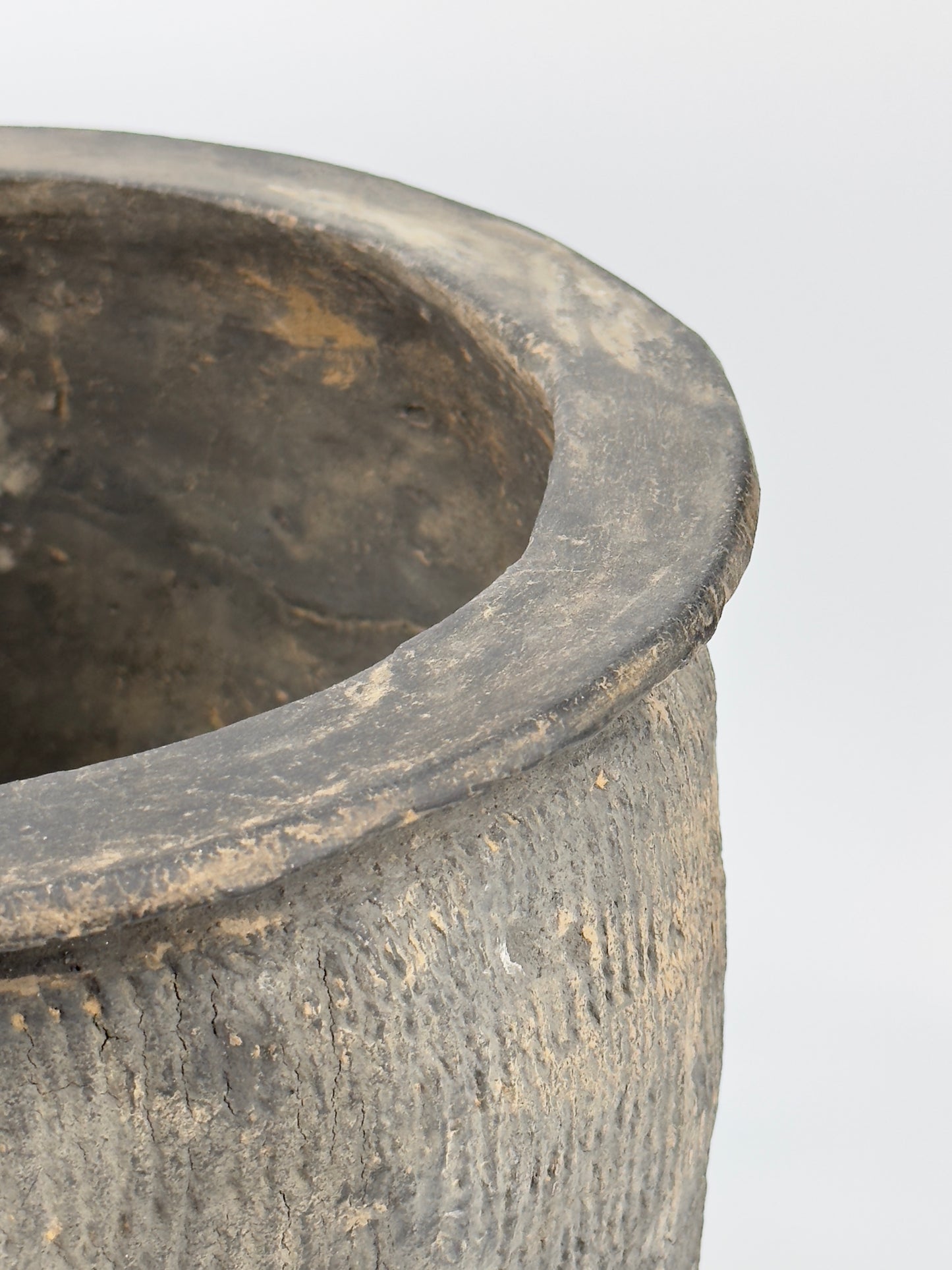Tripod in the shape of a bronze vessel li, Zhou or Shang dynasty
Tripod in the shape of a bronze vessel li, Zhou or Shang dynasty
Couldn't load pickup availability
The tri-lobed shape and combed ridges of this cooking pot increased heating efficiency by maximizing the vessel’s surface area. The shape of a bronze vessel li, with the body rising out of three hollow pointed legs to a wide moiuth with splayed-out rim. The exterior is covered with cord impressed pattern. The surface shows signs of oxidation from being buried in the soil for a long time.
Period: Zhou or Shang dynasty circa 1000 B.C.E.
Medium : Grey earthenware with impressed decoration
Type : Tripod vessel
Size : 29cm (Height) x 35cm(Diameter)
Condition : Good
Provenance : Acquired in late 1990s from Hongkong
Reference :
1) V&A Museum - ACCESSION NUMBER C.87-1954
https://collections.vam.ac.uk/item/O461367/tripod-unknown/
2) Smithsonian National Museum of Asian Art - ACCESSION NUMBER F1984.13
https://asia-archive.si.edu/object/F1984.13/
3) The University of Chicago - OBJECT NUMBER 1989.1
https://smartcollection.uchicago.edu/objects/6799/li-tripod-cooking-vessel
4) The MET - Accession Number: 1972.275.5
https://www.metmuseum.org/art/collection/search/49897
5) Kyoto National Museum - Three-footed Earthenware Vessel
https://jpsearch.go.jp/item/cobas-2716
* Shang Dynasty Pottery (1600-1046 BCE)
The Shang dynasty, known for its significant advancements in bronze casting, also produced notable pottery. Shang pottery is characterized by its practical use and simple designs, reflecting the utilitarian needs of the society. The pottery from this period includes both coarse wares used for everyday purposes and fine, high-quality ceramics used in ritualistic contexts. Common forms include jars, bowls, and cups, often with a dark, burnished surface. One distinctive feature of Shang pottery is the use of gray clay, and many pieces display clear signs of oxidation, giving them a unique, mottled appearance. The decorations were typically incised or stamped, featuring geometric patterns, zoomorphic designs, and motifs that are also seen in Shang bronze works.
* Zhou Dynasty Pottery (1046-256 BCE)
The Zhou dynasty saw the continuation and further development of pottery techniques. Zhou pottery is often more refined than its Shang predecessors, showing greater variety and complexity in forms and decorations. The use of the potter’s wheel became more widespread during this period, allowing for more uniform and intricate shapes. Common pottery items included storage jars, cooking vessels, and ritual wares, often adorned with more elaborate designs. The Zhou dynasty also introduced glazing techniques, resulting in a range of color finishes from green to brown. The pottery from this era often features incised decorations, with motifs that include dragons, mythical animals, and intricate geometric patterns, reflecting the sophisticated artistry of the time.
Both Shang and Zhou dynasty potteries are valuable for understanding the daily life, cultural practices, and technological advancements of ancient China. These artifacts, often unearthed with clear signs of oxidation, provide a tangible link to the past, revealing the evolving craftsmanship and aesthetic preferences of these early Chinese civilizations.
























